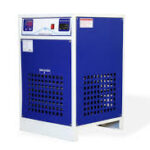Air Cooled Chillers
Air-cooled chillers are efficient refrigeration systems that utilize airflow to remove heat from the refrigerant, whereas water-cooled chillers depend on cooling towers and a steady water supply.
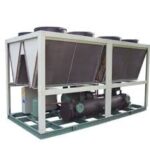
Water Cooled Chillers
Water-cooled chillers rely on a water circulation system and cooling towers to dissipate heat effectively. They are ideal for large-scale industrial and commercial cooling applications.
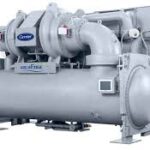
Screw Chillers
Screw chillers provide effective cooling for industrial and HVAC applications. They operate with screw compressors, ensuring high efficiency. These systems are ideal for continuous
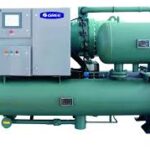
Variable Speed Chillers
Variable speed chillers feature compressors equipped with VFDs, enabling dynamic speed adjustments according to real-time cooling load requirements for enhanced energy efficiency.
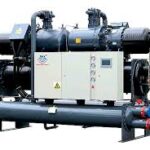
Oil Chiller
Oil chillers provide temperature control for lubricating oil in industrial applications. They prevent excessive heat buildup, reducing wear and tear. Proper oil cooling enhances machine performance
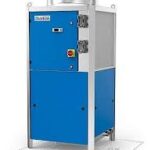
Hydraulic Oil Chiller
Hydraulic oil chillers regulate the temperature of hydraulic oil in industrial systems. They prevent overheating and ensure smooth machine operation. Proper cooling enhances efficiency and longevity.

Online Chiller
Online chillers are advanced refrigeration systems with remote monitoring capabilities. They ensure uninterrupted cooling for various industries. Internet-based control enhances efficiency and convenience.
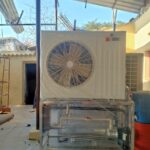
Glycol Chiller
Glycol chillers provide consistent cooling using a glycol-water solution. They are essential in industries like breweries, wineries, and food processing. Precise temperature control improves production quality.
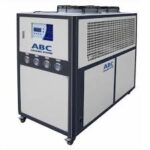
Spindle Chiller
Spindle chillers ensure optimal spindle temperature in high-speed machinery. They prevent overheating and thermal expansion issues. This results in smooth and precise machining.
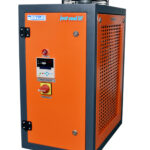
Refrigerated Air Dryer
Refrigerated air dryers reduce humidity in compressed air systems using cooling technology. They remove water vapor by condensing it into liquid. This helps prevent damage to air tools and machinery.
